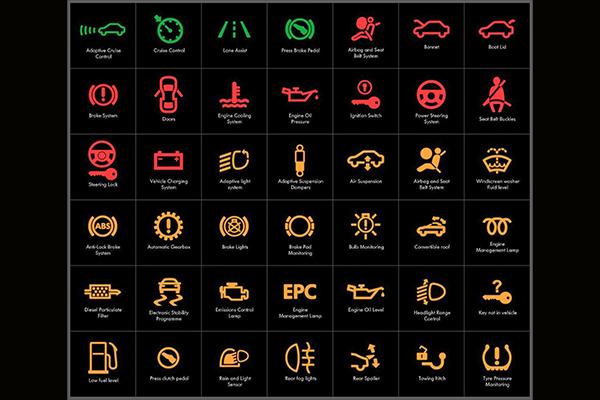Understanding your vehicle is crucial for a safe and enjoyable driving experience, and one of the most informative aspects of any car is its dashboard. For Nissan owners, familiarizing yourself with the myriad symbols and indicators displayed on your dashboard can save you from frustration and potential peril. This guide will delve deeply into Nissan dashboard symbols and their meanings, ensuring you’ll never be puzzled by a light illuminated on your dashboard again.
The first order of business is to understand why these symbols exist. They’re designed to convey vital information about your vehicle’s condition and operational status. From engine performance to safety features, these indicators can provide insight that helps mitigate issues before they escalate.
1. Warning Indicators
Warning indicators are perhaps the most critical symbols to be aware of. When illuminated, these signals typically indicate that something requires immediate attention. For example, the check engine light is one of the most recognizable warning symbols. This light can indicate a range of problems, from minor issues like a loose gas cap to significant engine problems requiring immediate service.
Additionally, your Nissan may feature a battery warning symbol—a battery icon with a plus and minus sign. If this appears, it indicates a potential issue with your car’s charging system. Ignoring it could leave you stranded, as a failing battery can affect many operational systems in your vehicle.
Another important warning light is the oil pressure warning. This symbol, often depicted as an oil can, alerts you to low oil pressure, which can lead to catastrophic engine damage if left unaddressed. It’s critical to stop and check oil levels immediately if this light illuminates.
2. Engine and Mechanical Indicators
In addition to warning indicators, Nissan dashboards include several engine and mechanical symbols. The temperature warning light—commonly illustrated as a thermometer submerged in liquid—signals that the engine is overheating. If you see this light, it’s wise to pull over and allow your vehicle to cool before resuming your journey.
Then there’s the anti-lock braking system (ABS) indicator. When this light appears, it suggests that your ABS is not functioning properly, which may compromise your braking performance. This is critical as it may affect your ability to stop safely in emergency situations.
Additionally, a tire pressure warning light—typically represented by a horseshoe shape with an exclamation point—indicates that one or more of your tires are under-inflated. Maintaining proper tire pressure is essential for safety, fuel efficiency, and tire longevity.
3. Safety Indicator Lights
Nissan prioritizes safety, and many dashboard symbols are dedicated to alerting drivers about safety features and systems. For instance, the traction control light, often portrayed as a car with zigzag lines beneath it, indicates that the vehicle’s traction control system is engaged. This system helps maintain control during unfavorable driving conditions such as rain or snow.
Additionally, an airbag warning light, depicted as a person with an inflated airbag in front of them, alerts you to any malfunctions in the airbag system. Ensuring that this system is functional is crucial for passenger safety, so it’s important that this indicator be addressed promptly.
4. Exterior and Interior Functionality Symbols
Nissan dashboards also feature symbols that pertain to external and internal vehicle functionalities. For instance, the headlight indicator (a symbol resembling headlights) illuminates when the headlights are on, serving as a reminder for drivers to turn them off when not needed to preserve battery life.
Moreover, the fuel gauge—depicted as a fuel pump—indicates the vehicle’s fuel levels. When it approaches empty, you can avoid being caught off guard by knowing when to refuel. Staying aware of this symbol can prevent inconvenient gas station stops during critical moments.
5. Infotainment and Connectivity Symbols
Modern Nissan vehicles come equipped with various technological features that are reflected in the dashboard icons. For example, Bluetooth connectivity indicators, often represented by the Bluetooth symbol, signify that your device is connected to the car’s audio system. If paired successfully, you can stream music and make hands-free calls, adding to convenience and safety.
The navigation system icon—typically depicted as a simple map or compass—lets you know the current status of your GPS system. Understanding this system is essential for navigating unfamiliar roads with confidence.
6. Conclusion: Stay Informed and Engaged
Understanding Nissan dashboard symbols is more than just knowing what they mean; it’s about enhancing your driving experience and ensuring safety on the road. By familiarizing yourself with these indicators, you can proactively address maintenance needs, navigate efficiently, and optimize performance.
In essence, your dashboard serves as a dynamic interface between you and your vehicle, constantly providing information that empowers you to make informed decisions. Next time you hop into your Nissan, take a moment to glance at those symbols—their meanings could make all the difference in your driving journey.
